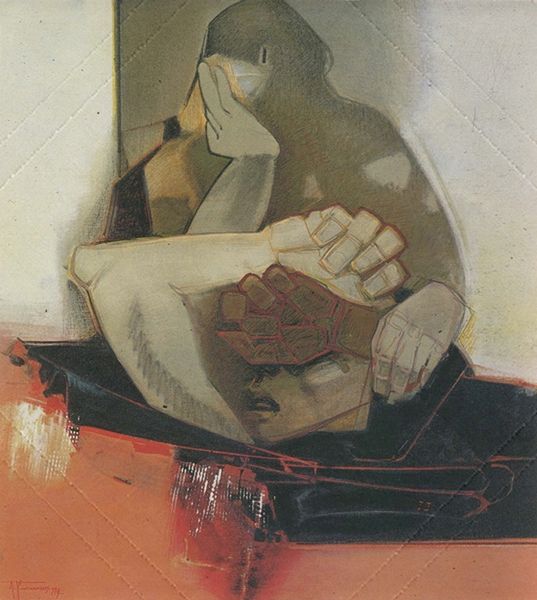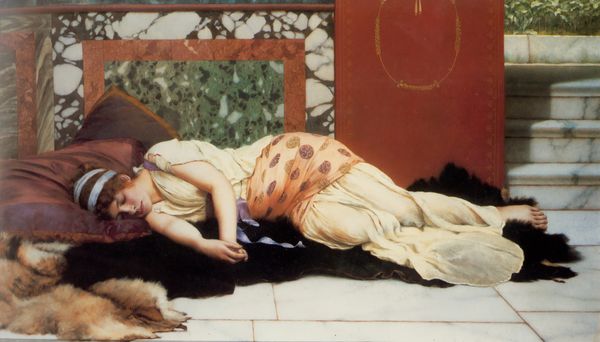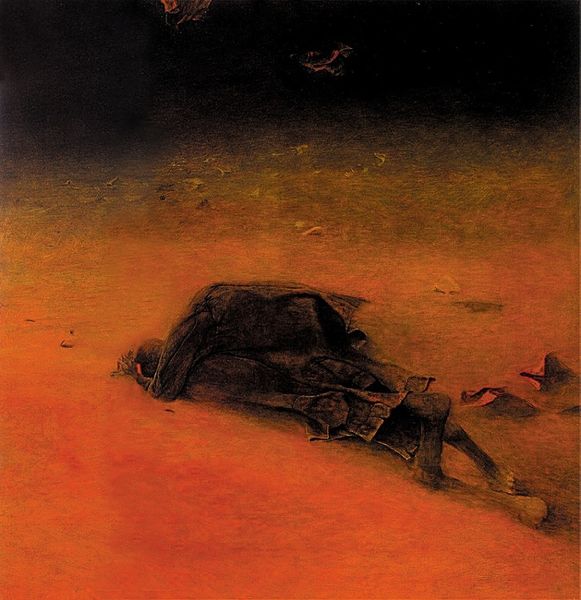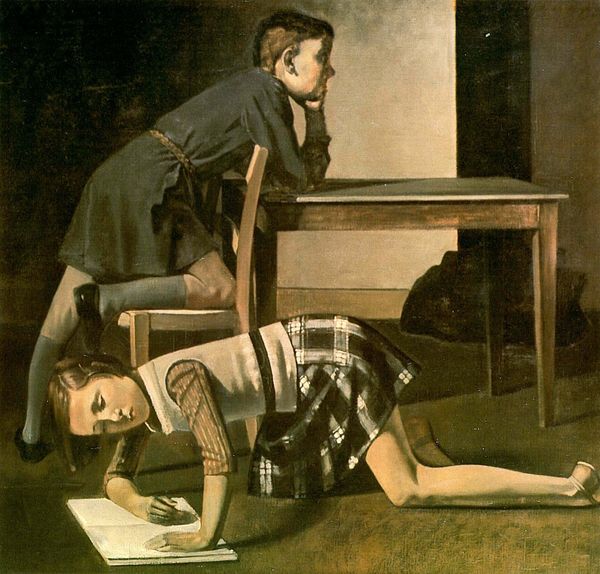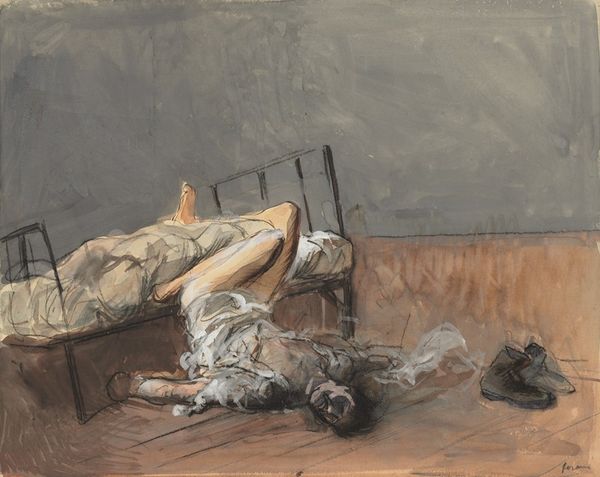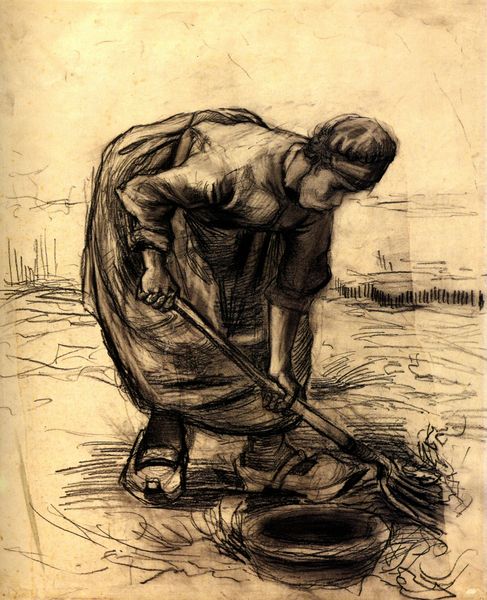
painting, oil-paint
#
portrait
#
painting
#
impressionism
#
oil-paint
#
figuration
#
genre-painting
#
modernism
#
realism
Dimensions: 80 x 100 cm
Copyright: Public domain
Gustave Caillebotte's *The Parquet Planers* shows two men, stripped to the waist, smoothing a wooden floor. Painted in France in the 1870s, the image is significant for its focus on the working class, a subject rarely depicted in fine art at the time. The painting gains meaning through its visual codes and historical associations. The careful attention to the play of light on the newly planed floor and the muscular bodies of the workers elevates the scene beyond mere documentation. It subtly critiques the social structures of its time by presenting manual labor with the same aesthetic consideration typically reserved for portraits of the wealthy. It also self-consciously critiques the institutions of art, because academic painting generally excluded the urban working class. To understand it better we might research the social and economic conditions of Paris during the late 19th century, examining how rapid industrialization transformed class structures. By understanding how the artistic establishment of Caillebotte's time regarded the portrayal of labor, we can fully appreciate this painting’s social commentary.
Comments
No comments
Be the first to comment and join the conversation on the ultimate creative platform.
